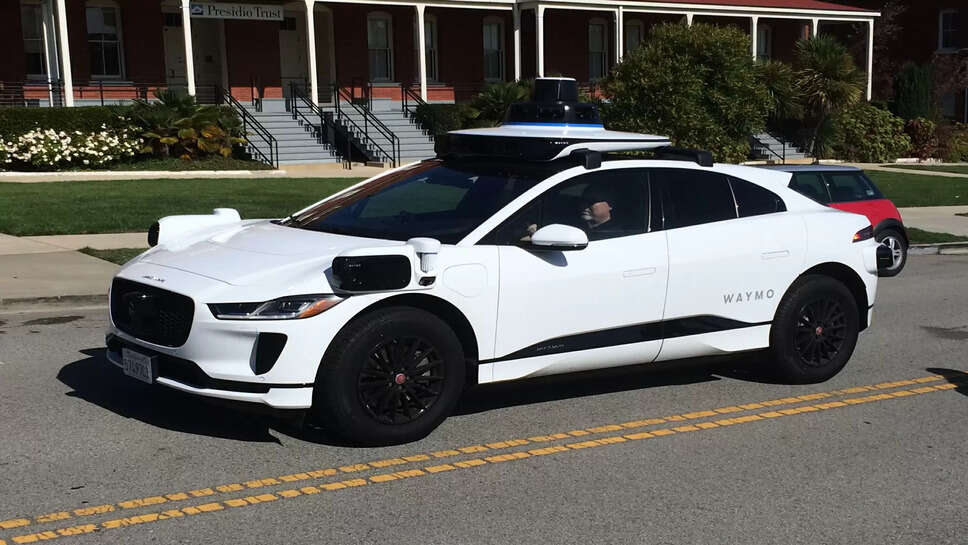Rode in a Driverless Waymo in San Francisco — and It Was Smarter Than Most Human Drivers

In the bustling streets of San Francisco, a city known for its eclectic mix of pedestrians, cyclists, cars, and unpredictable weather, I had the unique opportunity to experience a ride in a driverless Waymo vehicle. Autonomous vehicles (AVs) have long been heralded as the future of transportation, promising safer roads, less congestion, and greater mobility for all. But as someone who spends a significant amount of time on the road, I was curious to see how these promises held up in reality, especially amidst the challenging and chaotic environment of a major city.
What I found was fascinating: the Waymo ride was not just a technological marvel but, in many ways, a smarter and more cautious driver than most humans I’ve encountered.
The Initial Encounter: Setting Expectations
My journey began with a straightforward app-based booking process, not unlike hailing a ride on Uber or Lyft. Instead of a driver awaiting me, I was greeted by a sleek, clean vehicle that operated completely without a human behind the wheel. The vehicle was equipped with an array of sensors—lidar, radar, cameras—that constantly scanned its surroundings in real-time, creating a detailed 360-degree map of the environment.
Skepticism accompanied me as I climbed in. Could a machine navigate the tight corners, sudden jaywalkers, aggressive drivers, and complex traffic signals of San Francisco’s notoriously tricky roads? Would it make rash decisions, or worse, stall in the face of unpredictability?
A Calm and Measured Start
Right from the moment the ride began, the Waymo vehicle demonstrated a smooth and deliberate driving style. Unlike many human drivers, who often accelerate quickly or make last-second lane changes, the vehicle moved cautiously but confidently. It signaled early and consistently, maintaining safe distances from other cars and pedestrians.
The vehicle’s approach to intersections was particularly impressive. Rather than rushing through or inching forward to “force” its way, the Waymo car paused slightly, scanning for any signs of potential hazards. When a cyclist suddenly veered close, the car smoothly reduced speed, giving ample room without abrupt braking.
This was a stark contrast to the impatient honks and sudden lane cuts I have witnessed from many human drivers in the city. The Waymo’s ability to remain patient and non-aggressive showcased the potential of AVs to reduce road rage and accidents caused by human error.
Handling San Francisco’s Quirks
San Francisco is infamous for its hills, narrow streets, and often unpredictable pedestrians. I was particularly interested to see how the vehicle would handle these urban quirks.
On a steep incline, the Waymo adjusted its speed to maintain a steady climb, ensuring it never rolled backward or lurched forward—something many human drivers struggle with. It also recognized the double-parked delivery trucks blocking part of the lane and smoothly navigated around them without hesitation, while still respecting traffic laws.
When it came to pedestrians, the vehicle’s sensors detected even the smallest movements. Several times, people waiting to cross mid-block were approached cautiously, with the vehicle stopping well in advance rather than inching forward to intimidate or rush them, as human drivers sometimes do.
The autonomous system seemed to have an almost preternatural awareness of its surroundings, anticipating potential hazards before they even fully materialized.
The Tech Behind the Drive
What makes Waymo’s self-driving system so adept is its combination of advanced technologies. The lidar system acts as the vehicle’s eyes, sending out laser pulses to create a real-time 3D map of the environment. Cameras and radar complement this by detecting colors, shapes, and distances, even in poor weather or low light.
All this data is processed instantly by powerful onboard computers, which analyze the behavior of other road users, predict their movements, and plan the vehicle’s own path accordingly. This enables the vehicle to react not just to what is happening now, but to what might happen in the next few seconds.
Unlike humans, who can be distracted, fatigued, or emotionally compromised, the Waymo system is tireless and unbiased. It follows the rules of the road to the letter, and when faced with unexpected situations, it errs on the side of caution.
The Ride Experience: Comfort and Confidence
From a passenger perspective, the ride was remarkably smooth. The vehicle accelerated gently, maintained consistent speeds, and took turns cleanly without jerking. Unlike some human drivers who may brake late or accelerate suddenly, this ride felt like sitting in a car driven by the most cautious and experienced chauffeur.
What stood out was the sense of safety I felt, knowing that the vehicle’s sensors continuously monitored every angle, something even the most vigilant human driver cannot fully achieve.
The onboard interface also kept me informed, displaying upcoming turns and estimated time of arrival. While it lacked the friendly banter of a human driver, the calm, professional nature of the vehicle’s performance more than compensated for it.
Comparing to Human Drivers: Strengths and Weaknesses
After several trips in San Francisco, it became evident that the Waymo driver excelled in areas where humans often falter:
-
Consistency: The vehicle consistently obeyed speed limits and traffic rules, whereas many human drivers tend to speed or take liberties.
-
Attention: With 360-degree awareness, it did not get distracted by phones, conversations, or fatigue.
-
Patience: It never rushed or engaged in aggressive behavior, reducing chances of road rage incidents.
-
Precision: Navigated tricky situations like narrow streets and double parking with surgical accuracy.
However, the vehicle also exhibited some limitations:
-
Cautiousness can mean slower rides: At times, the cautious approach meant longer waits at intersections or slower lane merges than typical human drivers would attempt.
-
Handling complex social cues: Humans often rely on eye contact, gestures, or subtle signaling when interacting with pedestrians and other drivers—nuances that AVs are still learning to interpret.
-
Responding to unusual situations: While excellent at programmed scenarios, rare or unexpected events may require human judgment or intervention.
The Road Ahead: How Driverless Cars Could Change Urban Life
The experience of riding in a Waymo made me reflect on how autonomous vehicles might transform city life. With fewer accidents caused by human error, roads could become safer. Traffic congestion might ease as AVs optimize speeds and distances to prevent bottlenecks.
For those unable to drive—elderly people, persons with disabilities, or those without licenses—driverless cars could offer newfound independence. Moreover, reduced pollution and lower noise from smoother driving could improve urban living conditions.
Of course, widespread adoption requires resolving technological, legal, and ethical challenges. Infrastructure upgrades, regulations, cybersecurity, and public trust all play crucial roles.
Smarter Than Most Human Drivers?
Having spent hours inside a Waymo driverless car weaving through San Francisco’s complex traffic, I can confidently say it was smarter, safer, and more reliable than many human drivers I’ve encountered. Its unwavering adherence to traffic rules, patience with unpredictable road users, and advanced situational awareness created a driving experience that felt not just futuristic but reassuring.
While it’s not perfect and cannot yet fully replicate the nuanced judgment of an experienced human driver, the potential benefits for safety, efficiency, and accessibility are undeniable.
As autonomous vehicle technology continues to evolve and expand, I look forward to a future where smart machines share the roads with humans—hopefully making them safer for all.
